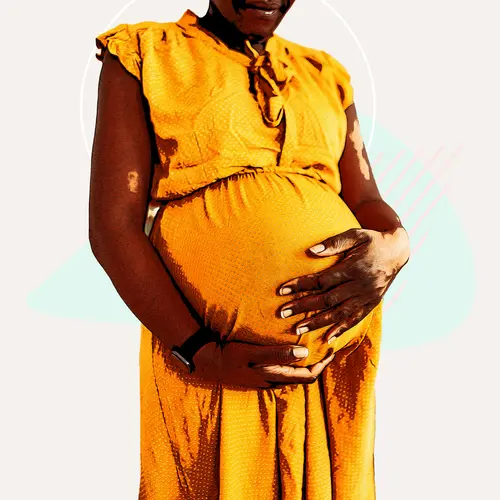Breast milk looks different over time, ranging from the yellow of colostrum to white, creamy, or clear. Sometimes, blood tinges the milk pink, red, or brown. Seeing blood in breast milk causes alarm, but in most cases, it looks worse than it actually is.
Knowing why this happens and the symptoms that go along with it gives you a better sense for how to respond — and helps you judge whether you need to take any action at all.
What Causes Blood in Breast Milk?
Many situations can lead to blood in breast milk. These range from mild concerns to urgent signs of trouble. Some examples include:
Rusty pipe syndrome. Breast milk that appears reddish-brown sometimes results from a phenomenon called rusty pipe syndrome.
Typically, rusty pipe syndrome happens during the first few days of breastfeeding. A type of breast engorgement, it results from increased blood flow that accompanies an increase in milk production. Some of this blood may seep into the colostrum or breast milk and change its color. This is rarely painful and should disappear after a few days.
Cracked nipples. Another common source of blood in breast milk, cracked nipples may happen if a baby doesn't attach to the nipple well. Occasionally, issues such as tongue-ties or thrush may be to blame. Breast milk or medical-grade lanolin can be applied to the cracked area to help with healing.
Mastitis. Blood in breast milk is just one of several symptoms associated with mastitis (inflammation of the breast tissue). Typically, nursing mothers with this condition get tender or painful breasts, as well as swelling, lumps, or fever. Bloody nipple discharge can happen during mastitis but is more often a cause of the condition than a symptom.
Breast cancer. Although rare, breast cancer can sometimes cause blood in breast milk. Typically, this results from nipple discharge and includes other symptoms, such as breast thickening or lumps. These issues are often confused with mastitis, but both conditions require medical attention.
What to Do When You Have Blood in Breast Milk
How you respond to blood in breast milk may depend on which symptoms you get and at what point in your breastfeeding journey the problems arrive. For example, small amounts of blood in the first few days of breastfeeding may not need action, especially if there are no other symptoms.
Common responses to blood in breast milk include:
Continue breastfeeding. In most cases, it's safe or even helpful to continue breastfeeding if you see blood in your breast milk. This can sometimes be a sign of health problems for the mother, but it's not dangerous for babies. Some mothers find that blood in the breast milk causes babies to spit up more, but this is rarely cause for concern.
Continue following advice from your doctor and lactation consultant, regardless of the presence of blood in your breast milk. As you and your baby adjust to breastfeeding, the problem may go away on its own.
Wait it out. Waiting for blood to go away is the best solution when only a small amount appears during the first days of breastfeeding. If the blood clearly results from common concerns such as engorgement or rusty pipe syndrome, there’s no need to seek help yet. Instead, focus on resolving the underlying problem.
Work on attachment and positioning. If cracked nipples cause blood in breast milk, a better attachment (latch) process could fix the problem. To begin, try different positions until you find one that's comfortable for both you and your baby. No matter which position you prefer, your baby’s head and spine should fully align. The mouth should open wide before attaching, with the chin touching the breast as much as possible.
If you still struggle to get a good latch, make an appointment with a lactation consultant. Mention that you’ve spotted blood in your breast milk. You should receive targeted advice, as well as follow-up attention to make sure that you’re safe and that your breastfeeding efforts are on track.
Ask your doctor. If you’re worried that blood in your breast milk could signal mastitis, cancer, or some other serious problem, contact your doctor as soon as possible. If you have cancer, you may also find lumps in your breasts not related to clogged milk ducts or mastitis.
When you visit your doctor, they'll ask about your medical history and current breastfeeding practices. If the doctor suspects cancer, you may receive a breast exam, a mammogram, or an ultrasound. An official diagnosis can only be made once you have a biopsy.


